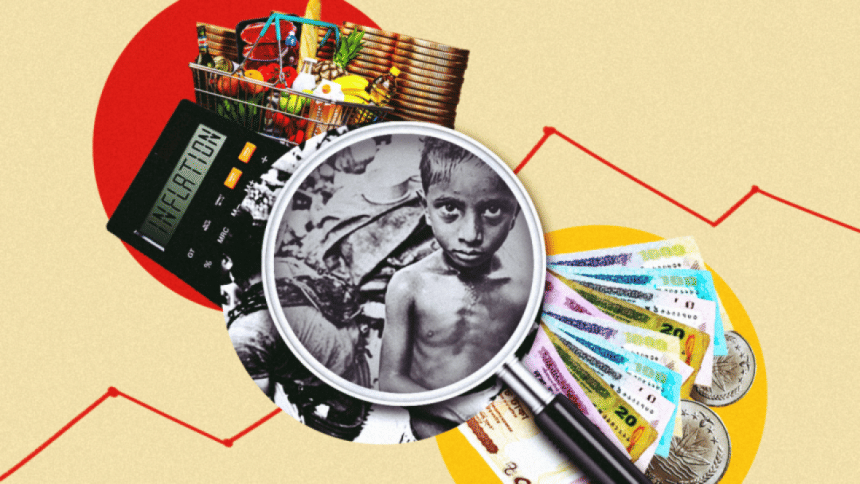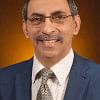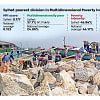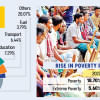Multidimensional poverty measurement is key to planning targeted programmes for the poor

Poverty is a global issue affecting about one-tenth of the people worldwide. It is a relevant concern not only in the developing countries but also to some extent in the developed world. As per 2025 figures, an estimated 808 million people or 9.9 percent of the world's population live under the poverty line. Of them, about 73 percent live in the sub-Saharan Africa; 12 percent in South Asia, four percent in Latin America and Caribbean countries; five percent in Middle East and North Africa; five percent in East Asia and the Pacific and the rest in the other parts of the world (Source: "The World Bank's new global poverty lines in 2021 prices," World Bank, June 9, 2025). Poverty is measured in most countries using an income-based approach. Primarily, it entails determining the proportion of the population of a country falling below a particular threshold called the "poverty line." The line indicates the income or resources that are required to procure a bundle of basic items like food, clothing and shelter. Those who fall below this line are considered poor.
In fact, poverty represents more than just income—it also has an economic and social dimension. While the indicators of poverty may vary somewhat across countries, low income is a common feature of poor families, but income does not characterise poverty alone. The poor often face a whole range of issues, such as lack of health and educational facilities, unsafe water and poor sanitation, malnutrition, poor housing, inadequate access to finance, lack of employment opportunities, low mobility, especially for women, and very low social and political participation. In Bangladesh, poverty is measured by Cost of Basic Needs (CBN) method since the mid-1990s, which is an economic approach based on the purchasing power of a family to buy a specific bundle of food and non-food items. The Bangladesh Bureau of Statistics (BBS) undertakes poverty measurement on the basis of data collected for the Household Income and Expenditure Survey (HIES) and the Poverty Monitoring Survey (PMS). The latest poverty data for Bangladesh from 2022 shows that the national poverty rate was 18.7 percent.
Poverty is primarily a state of deprivation for a family or an individual. In Bangladesh, poverty is measured by looking at economic deprivation, thus it misses out other dimensions of poverty. This way of measuring poverty was suggested by the World Bank in 1990 to monitor global poverty. In 1990, the WB fixed $1 per person per day, which was assumed to be the income needed to buy food and other necessities for subsistence in the poor countries, as the poverty line. The poverty line has been updated a number of times since then. In the middle of this year, it was reset at $3 per person per day.
The World Bank and UN agencies acknowledge that the poverty rate cannot be calculated based on a single dimension and recognise that, besides monetary income, other deprivations are worth factoring in for a better understanding of poverty in a country.
Thus, multidimensional poverty measurement is required to capture poverty from a holistic point of view. Factors like inadequate access to healthcare and quality education, low wages, lack of credit facilities, gender discrimination, environmental challenges and natural disasters can perpetuate poverty. These factors interact and reinforce poverty. For example, poor quality of education exacerbates poverty by limiting a disadvantaged family member's ability to secure a well-paying job, which in turn limits his or her ability to move out of poverty. Therefore, it is argued that the real poverty line should be calculated not only on the basis of income, but on the basis of all the different factors which interact and perpetuate poverty.
This understanding led to the development of the Multidimensional Poverty Index (MPI) by the World Bank and UNDP and is being calculated for more than 100 countries for the last 15 years. The importance of MPI is also recognised by Sustainable Development Goal 1.2. The Voluntary National Review reports submitted by different countries, including Bangladesh, since 2016, cover this goal. The MPI complements the traditional monetary poverty measures of $3 per person per day and is estimated in Bangladesh and other countries by using the data collected by Demographic Health Survey (DHS) and Multiple Indicator Cluster Survey (MICS). The MPI provides data on the percentage of households in a country deprived of three dimensions of poverty: monetary, education-related and living standards. The education indicator includes years of schooling and school attendance. The living standards include indicators like availability of cooking fuel, household sanitation facility, safe drinking water, electricity, housing materials, and ownership of items like radio, TV, telephone and refrigerator. This way of measuring poverty enables us to have a comprehensive picture of poverty and take better policy decisions to improve the lives of the poorest and most vulnerable people. The MPI data is available for over one hundred countries through the Human Development Reports annually since 2010.
The multidimensional poverty measurement is better than the traditional measurement based on the narrow definition of poverty calculated on the basis of disposable family income. According to the Human Development Report (HDR) 2025, approximately 24.6 percent of Bangladesh's population experiences multidimensional poverty. In order to address poverty, the data on multidimensional poverty should be analysed to design more effective, geographically targeted and comprehensive interventions to achieve better results. This approach allows a better comprehensive understanding of the deprivations faced by people and helps draw up impactful plans to address multiple vulnerabilities experienced by them. Social protection interventions, micro-credit programmes, skill building, income-generating activities and public service delivery mechanism can all be better planned if multiple deprivations are taken into account. This should be a powerful and sustainable strategy for poverty reduction in Bangladesh.
Dr Nawshad Ahmed, a retired UN official, is an economist and urban planner. He can be reached at [email protected].
Views expressed in this article are the author's own.
Follow The Daily Star Opinion on Facebook for the latest opinions, commentaries and analyses by experts and professionals. To contribute your article or letter to The Daily Star Opinion, see our guidelines for submission.

 For all latest news, follow The Daily Star's Google News channel.
For all latest news, follow The Daily Star's Google News channel. 








Comments